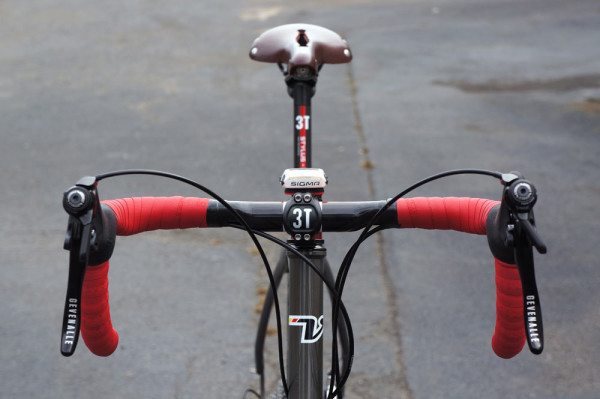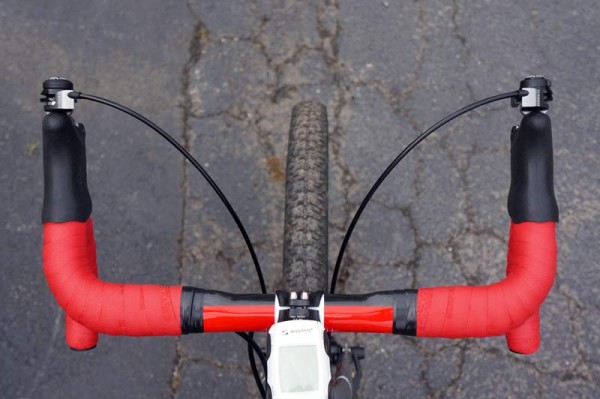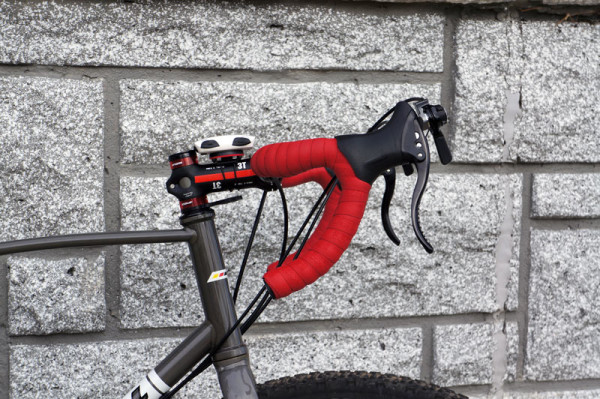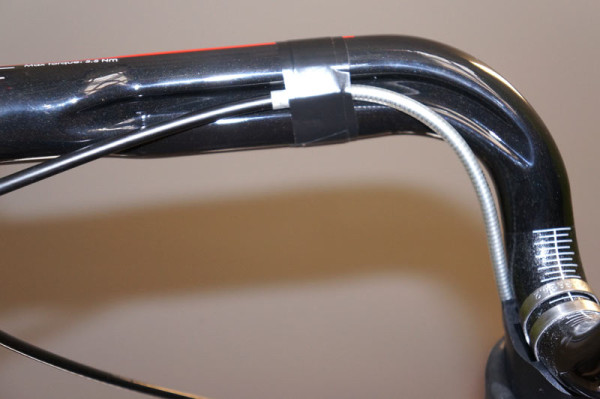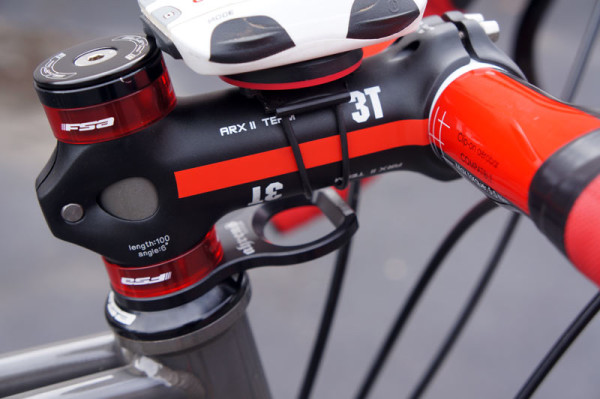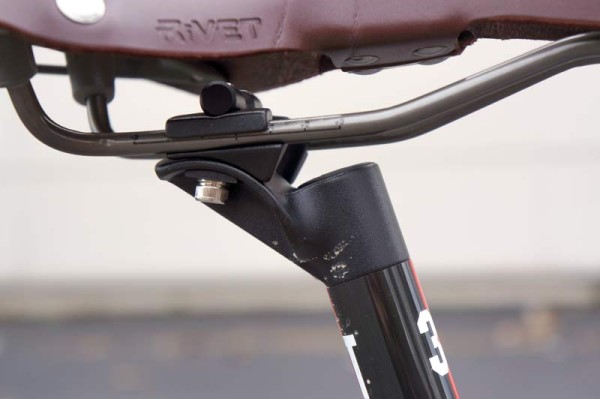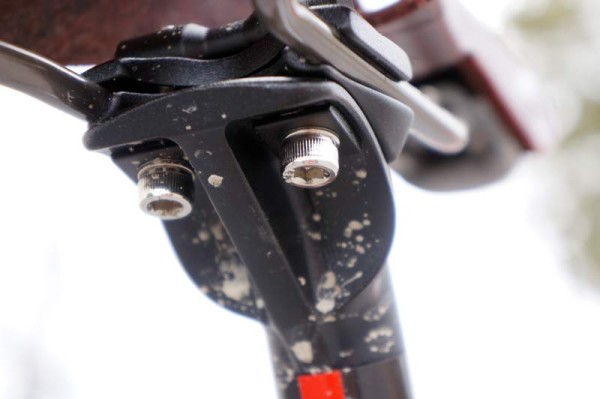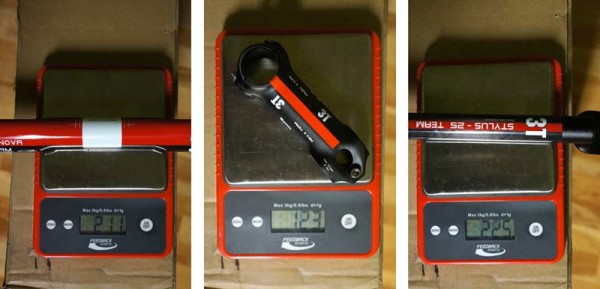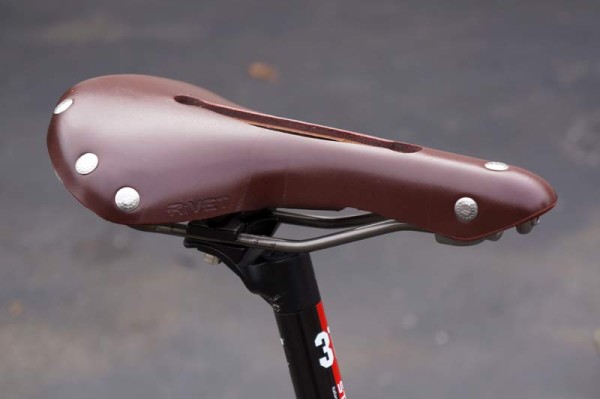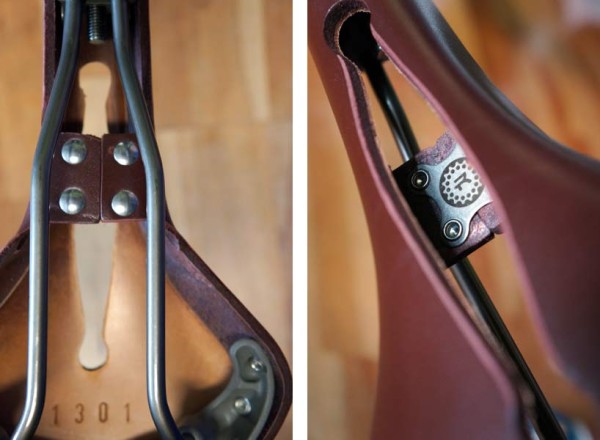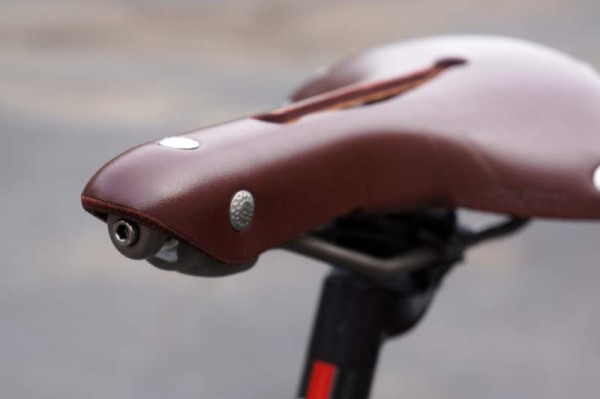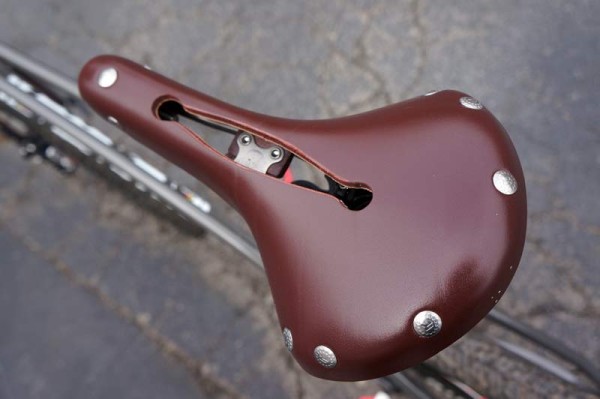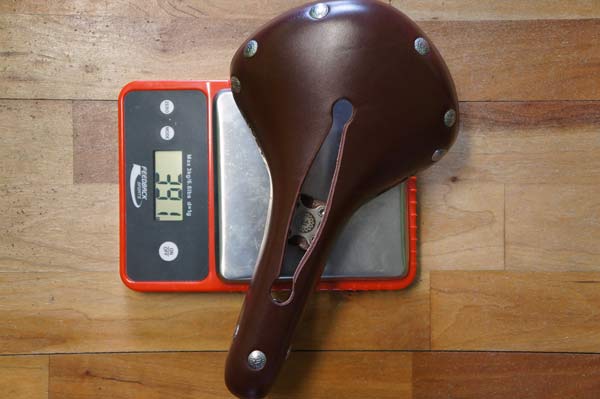As good as a frame may be, it’s nothing without a comfortable cockpit from which to pedal. Part one of Project: World’s Funnest Bike showed off the Van Dessel WTF, a steel do-it-all frame that is the platform for this build. Now it’s time to show all the contact points chosen, explain why I chose those parts and, of course, weigh them.
To be completely honest, the 3T handlebar, stem and seatpost were originally planned for an all-Italian steel road bike that’ll be another project later this spring. But when it arrived, the red stripes of their Team level parts matched up so well with other red bits on the bike that the decision to steal them for this build was all too easy. Add in red bar tape and it made for a striking visage…
3T Cycling makes a wide range of bar sizes and shapes. I chose the Ergonova because it has a wider, flatter top section with a shallow, ergonomic bend. Combined with Zipp’s thick, grippy and oh-so-comfortable cyclocross bar tape, it creates a very comfortable perch in any hand position.
Most of my time is spent on the tops and hoods, and the Ergonova’s shape creates a very flat platform that transitions perfectly into the brake lever’s hoods.
Underneath, there’s a wide channel that accommodates both shift and brake cable housing. Yes, I taped it into place better than this before it was all wrapped up. Markings on the backside of the curve make it easy to get the levers matched up and level on each side.
The ARx II Team stem is a fairly straightforward alloy stem. It’s made of AL7075 T6 with an alloy faceplate and titanium Torx bolts. It’s available in +/-6º and +/-17º rises, I chose the six. Of course, for a bike like this, you must have a bottle opener somewhere on board, so Ahren’s headset spacer/opener was used. Well worth the extra couple grams.
The Stylus Team seatpost uses a carbon fiber shaft with alloy head and steel bolts. I had hoped to test the new Ionic comfort posts since this was going on a steel frame, but this is what was sent. It’s a 27.2 post, so that thinner diameter combined with the carbon shaft seem to be taking the hits in stride and providing a comfortable ride.
The mounting hardware uses two bolts on a rounded base. This isn’t my favorite design for two reasons: First, you have to deal with two bolts to change anything. Contrast that with Moots’ post that uses one bolt to adjust tilt and the other to adjust fore/aft position, which leaves each position alone when adjusting the other. Second, the parts here are a bit fiddly – once loosened, it’s a sure bet the angle will move as you adjust fore/aft, so marking the spot with tape or a small etch would help get the saddle back to the desired angle more easily.
I usually opt for a 0mm offset, but this one’s 25mm offset seems fine on this application (both offsets are available for the Stylus). The minor complaints about setup aside, once tightened down, everything’s held together firmly and without issue so far. There’s no creaking or slipping.
Weights are sizes are:
- Ergonova Team carbon handlebar (420mm wide/123mm drop/77mm reach) – 211g
- ARX II Team alloy stem (100mm/6º rise) – 123g
- Stylus 25 Team carbon seatpost (27.2 / 350mm length) – 225g
I first spotted Rivet at NAHBS a couple years ago, impressed with the thick leather construction and classic look. They make three different shapes, at 150, 160 and 170 millimeters wide at the rear. All use American-grown leather that’s waterproofed during the vegetable-based tanning process so they don’t need to be treated after purchase.
The name refers to the construction method, and they say the saddles won’t ever droop, sag or flare.
Under the nose is an adjustment bolt that allows you to customize the flex of the cover. Just a few turns makes a noticeable difference, which is pretty interesting to play with to find the best compromise between suspension and firmness. At the back are saddlebag loops.
The 160mm mid-sized model is called the Independence, and that’s what’s being ridden. This particular product wasn’t sought out, but Rivet offered one up and once it arrived, I just knew this was the bike it’d be going on. First impressions are good, though the cutouts do need to soften up for longer riding without a chamois (you know, when just running to the store or goofing off around town). With properly padded Spandex, it’s palatable right outta the box.
Sizing is 270mm long by 160mm wide. It’s offered with both chromoly and titanium rails, and the ti version weighs in here at 391g. Claimed weight is 360g, so it’s a bit on the heavy side, but the steel one is claimed at 485g. Rails offer 80mm of adjustment. This one’s the only model they offer that uses a composite frame rather than metal, so it’s about 60g to 100g lighter than the other two. Retail is $295, available in five colors with the cutout, three without. Available on their website, or through BTI for your local shop to order.
Other bits shown here include the FSA headset, which comes with the frameset, and some clear FSA headset spacers that I had laying around…and they were red, so naturally they found a home on this bike! The computer is the Sigma ROX 10 GPS, which is pretty good overall and will get a separate review.
Stay tuned for Part Three: The Drivetrain & Wheels, coming soon!
